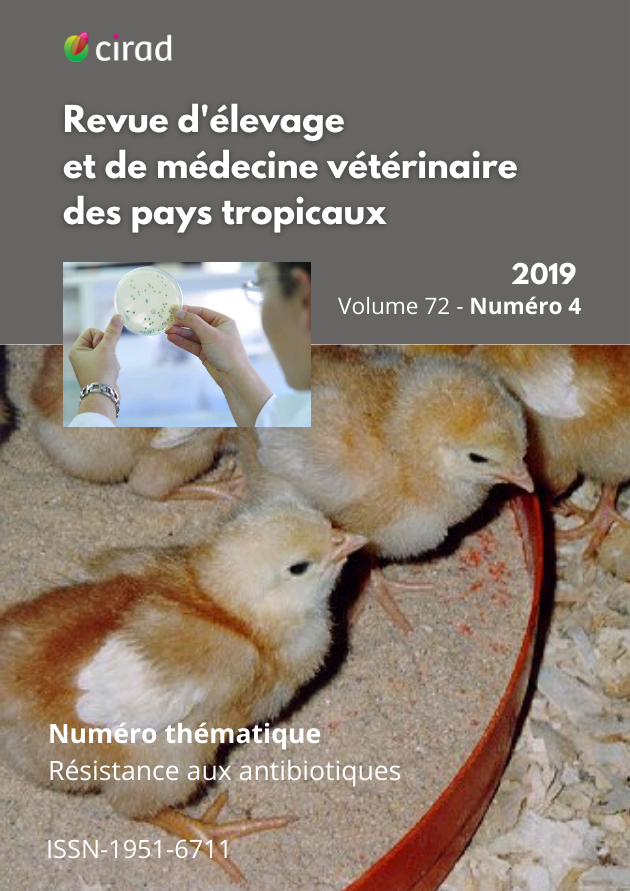Prevalencia y determinantes del carga de enterobacterias resistentes a cefalosporinas de tercera generación en Rattus sp. en la Reunión y Mayotte
DOI:
https://doi.org/10.19182/remvt.31508Palabras clave
rata, resistencia a los antibióticos, Enterobacteriaceae, epidemiología, Reunión, MayotteResumen
Las Enterobacteriaceae resistentes a cefalosporinas de tercera generación (ERC3G) representan un peso importante para la salud de humanos y animales en el Océano Índico. Las ratas, con una forma de vida sinantrópica, son reservorios comprobados. Usamos ratas como bioindicadores ambientales de la aparición de ERC3G. El objetivo principal de este estudio exploratorio fue generar hipótesis sobre la contaminación ambiental por ERC3G en los dos territorios franceses del Océano Índico. Se aspiró a alcanzar este objetivo mediante a) la estimación de la prevalencia de ERC3G y enterobacterias productoras de betalactamasas de espectro extendido (EBLSE) en ratas en los dos territorios, en 2013-2014, y b) la identificación de los determinantes de esta carga en ratas (caracteres de la historia de vida y uso de la tierra). En 2013-2014, se muestrearon ratas según un gradiente altitudinal en la Reunión y Mayotte en varios sitios poco antropizados. En una muestra de concordancia de 198 y 138 ratas, en la Reunión y Mayotte, respectivamente, la prevalencia de ERC3G fue de 5,1% y 8,7%, y la de EBLSE de 0,5% y 0,8%. La masa, la longitud de la cola y la proporción de los terrenos agrícolas en el área vital de la rata fueron determinantes de la carga de ERC3G en la Reunión. En Mayotte, los determinantes de la carga fueron una masa baja y el sitio de captura de la rata con una agrupación de casos positivos en una localidad específica. Finalmente, los resultados obtenidos parecen indicar una baja contaminación ambiental por ERC3G en la Reunión y Mayotte en 2013-2014. En la Reunión, se planteó la hipótesis de contaminación ambiental por esparcimiento de abono que requirieron investigaciones adicionales.
Descargas
Descargas
-
Resumen1073
-
PDF (Français)411
Recibido
Aceptado
Publicado
Cómo citar
Número
Sección
Categorías
Licencia
© A.Cohard et al., publicado por CIRAD 2020

Esta obra está bajo una licencia internacional Creative Commons Atribución 4.0.








